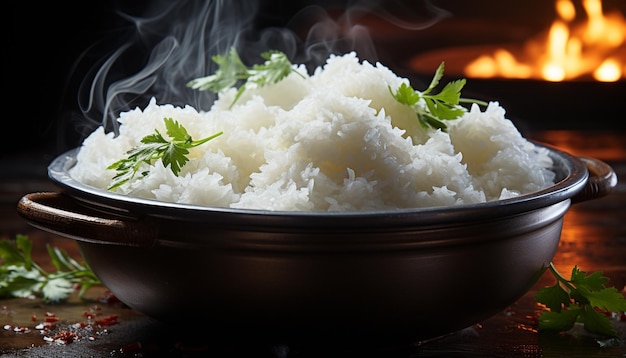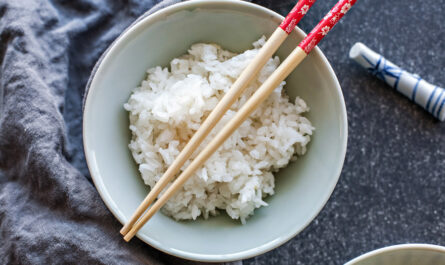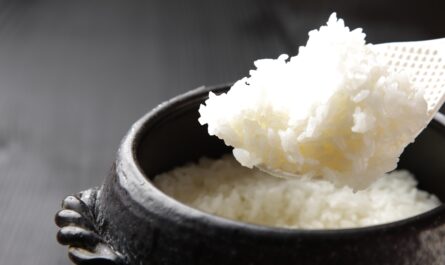Creating the perfect sushi rice is an art that can elevate your sushi-making experience from ordinary to extraordinary. Whether you’re a seasoned sushi chef or a home cook looking to impress, mastering the art of sushi rice is essential. In this article, we’ll provide you with 5 tips for perfect sushi rice that will ensure every grain is seasoned to perfection. Let’s dive into these tips and transform your sushi rice into a culinary masterpiece.

Understanding the Importance of Sushi Rice
Sushi rice, or shari, is the foundation of any sushi dish. It is more than just a filler; it is a critical component that complements the flavors of fresh fish and other toppings. The texture, flavor, and consistency of the rice can make or break your sushi. Therefore, understanding its importance is the first step in achieving culinary excellence.
Choosing the Right Rice
1. Selecting the Best Rice Type
The first step in creating perfect sushi rice is choosing the right type of rice. The best rice for sushi is short-grain or medium-grain rice, known for its sticky texture when cooked. Avoid using long-grain rice as it does not have the same sticky quality, which is essential for sushi. For more details, you can compare sushi rice vs. medium grain rice here.
2. Rinsing the Rice
Rinsing the rice is a crucial step in removing excess starch, which can make the rice too sticky and clumpy. Place the rice in a colander and rinse it under cold water until the water runs clear. This process also helps improve the rice’s texture, ensuring each grain is distinct yet sticky enough to hold together.
Cooking Sushi Rice to Perfection
3. Measuring Water and Rice Ratio
Getting the right water-to-rice ratio is essential for perfect sushi rice. Typically, a 1:1.25 ratio of rice to water works well. However, this can vary slightly depending on the type of rice and personal preference. Experiment to find the balance that works best for you.
4. Using a Rice Cooker
A rice cooker can simplify the process of cooking sushi rice. It ensures an even cook and prevents the rice from burning. Simply add the rinsed rice and water to the cooker and let it do the work. If you don’t have a rice cooker, you can still achieve great results on the stovetop with careful attention to timing and heat.
Seasoning for Flawless Sushi Rice
5. Preparing Sushi Vinegar
Sushi rice is not just plain rice; it is seasoned with a mixture of rice vinegar, sugar, and salt. This seasoning gives sushi rice its characteristic flavor. To prepare the seasoning, gently heat the vinegar, sugar, and salt until the sugar and salt dissolve. Once the rice is cooked, transfer it to a large bowl, and while it is still warm, gradually fold the vinegar mixture into the rice using a wooden paddle or spoon. This technique helps each grain of rice absorb the seasoning evenly.
Perfecting the Texture
The texture of sushi rice is pivotal. It should be sticky enough to hold together yet not mushy. Proper rinsing, cooking, and seasoning are key steps in achieving the perfect texture. Allow the rice to cool slightly before using it for sushi, as this helps it firm up to the ideal consistency.
Storing Sushi Rice
Sushi rice is best served fresh. However, if you need to store it, cover it with a damp cloth to prevent it from drying out. Keep it at room temperature for a few hours, but avoid refrigerating it, as this can alter its texture and flavor. Learn more about sushi rice vs. glutinous rice to understand different storage needs.
Common Mistakes to Avoid
Even experienced cooks can make mistakes when preparing sushi rice. Common errors include using the wrong type of rice, not rinsing thoroughly, incorrect water ratios, and improper seasoning. Awareness of these pitfalls will help you avoid them and ensure your sushi rice is perfect every time.
Enhancing Your Sushi Experience
Perfect sushi rice enhances the overall sushi experience. Its flavor and texture can elevate the taste of fresh fish and other toppings, creating a harmonious balance that delights the palate. Whether you’re making nigiri, rolls, or sashimi, the right rice can make all the difference.
Experimenting with Flavors
While traditional sushi rice is seasoned with rice vinegar, sugar, and salt, don’t be afraid to experiment with additional flavors. Some chefs add a hint of kombu (dried kelp) during cooking for an umami boost. Others infuse the rice with a touch of sake for added complexity. Experimenting with flavors can lead to unique and exciting sushi creations.
Pairing Sushi Rice with Ingredients
The versatility of sushi rice means it pairs well with a variety of ingredients. From fresh fish and seafood to vegetables and pickles, the possibilities are endless. Learn more about creative pairings at Serious Eats.
Conclusion: Mastering Sushi Rice
In conclusion, achieving perfect sushi rice is a matter of attention to detail and practice. By choosing the right rice, rinsing it properly, cooking it with care, and seasoning it to perfection, you can create sushi rice that enhances every bite. Remember, the journey to perfect sushi rice is an opportunity to explore flavors and textures, making each sushi creation a masterpiece.

FAQs
What type of rice is best for sushi?
Short-grain or medium-grain rice is best for sushi due to its sticky texture when cooked.
Can I use regular vinegar for seasoning sushi rice?
It’s best to use rice vinegar for authentic flavor, but in a pinch, a mild white vinegar can be a substitute.
How do I store leftover sushi rice?
Cover it with a damp cloth and keep it at room temperature for a few hours. Avoid refrigeration to maintain texture.
This article contains affiliate links. We may earn a commission at no extra cost to you.




